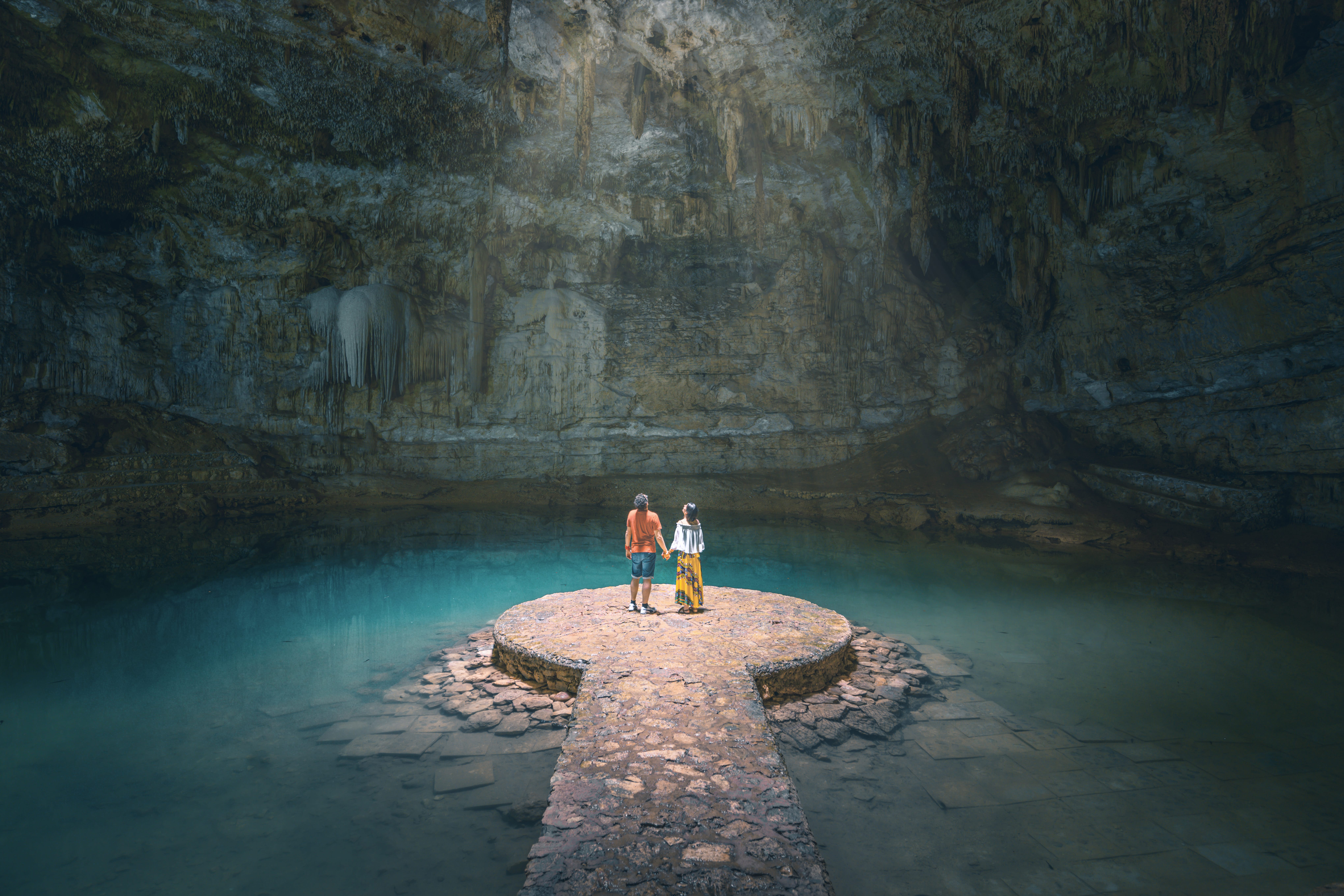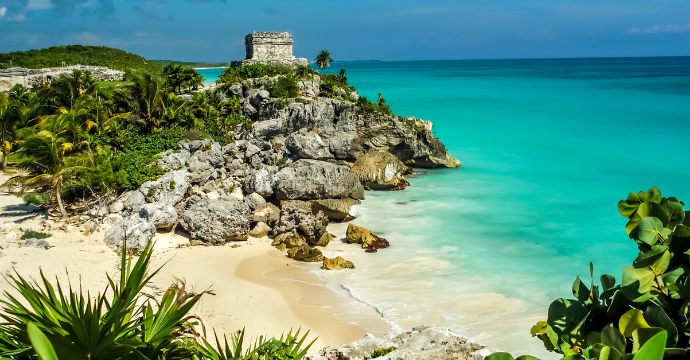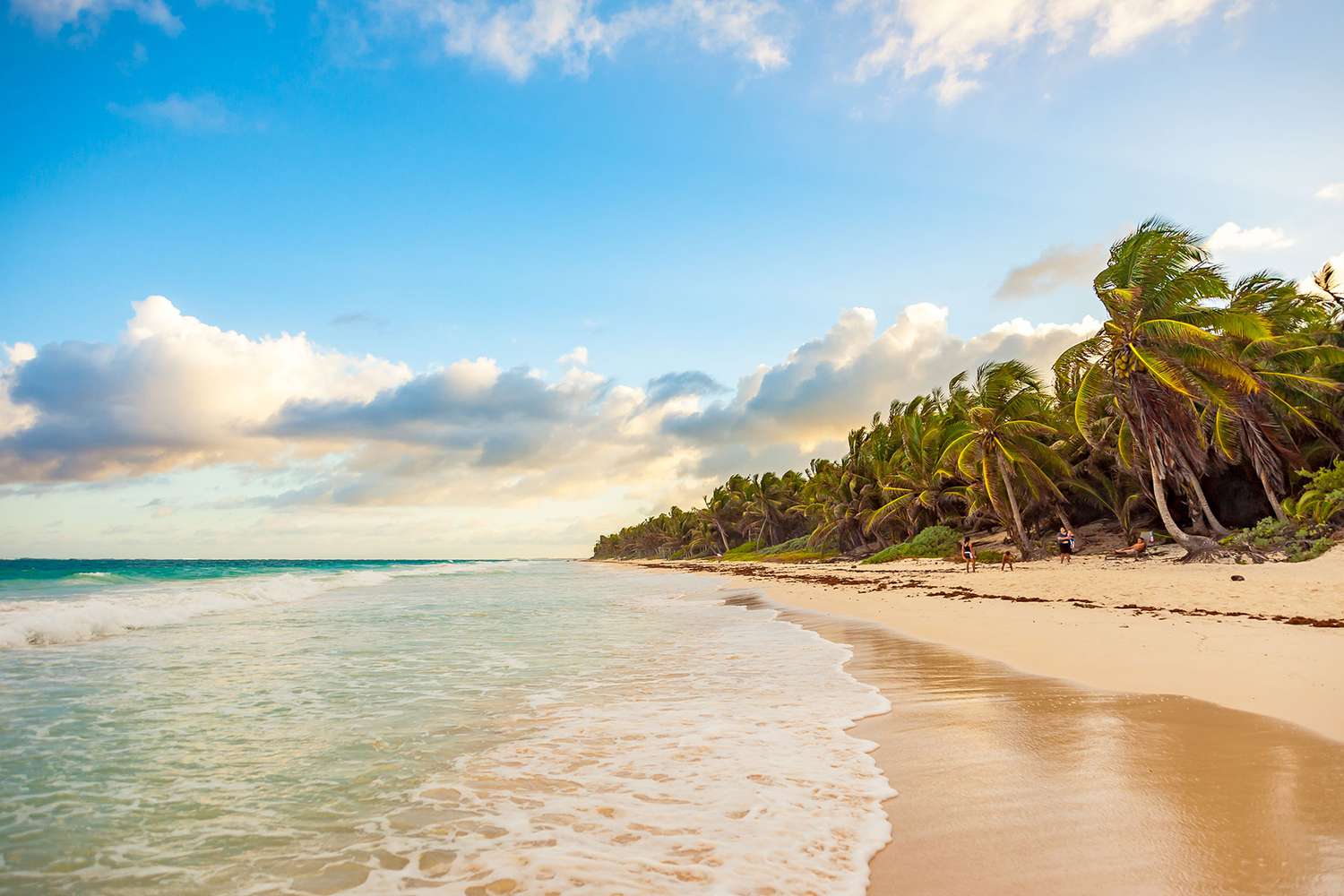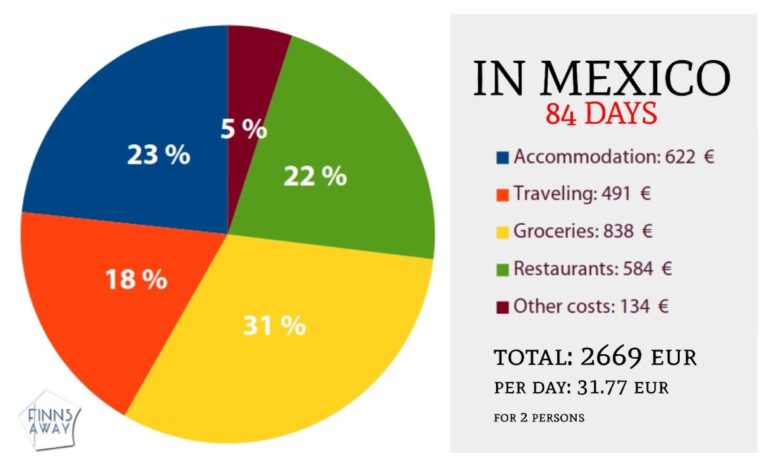Celebrating Day Of The Dead: Exploring Mexico’s Rich Traditions
Get ready to dive into the colorful and enchanting world of Mexico’s rich traditions as we explore the vibrant celebration of the Day of the Dead. This captivating holiday is a fascinating blend of ancient beliefs, artistic expressions, and heartfelt remembrance. Join me as we discover the customs, symbols, and rituals that make this celebration truly unique.
In Mexico, the Day of the Dead, or “Dia de los Muertos,” is a joyful and lively commemoration of loved ones who have passed away. It is a time for families and communities to come together to honor and celebrate the lives of their departed friends and relatives. Unlike the somber tone often associated with death, this celebration is full of vibrant colors, lively music, and mouthwatering food. From intricately designed sugar skulls to intricately decorated altars, every aspect of the Day of the Dead is steeped in symbolism and meaning. So, grab your marigolds and let’s embark on a journey to uncover the magic and beauty of this cherished Mexican tradition.
[Related Keywords: Day of the Dead, Mexico’s rich traditions, celebration, colorful, enchanting, ancient beliefs, artistic expressions, heartfelt remembrance, customs, symbols, rituals, unique, Dia de los Muertos, commemoration, loved ones, passed away, families, communities, honor, celebrate, departed, friends, relatives, vibrant colors, lively music, mouthwatering food, sugar skulls, intricately designed, decorated altars, symbolism, meaning, magic
Celebrating Day of the Dead is a fascinating way to explore the rich traditions of Mexico. This annual holiday, which takes place on November 1st and 2nd, is a time for families to honor and remember their loved ones who have passed away. It is marked by vibrant parades, elaborate altars adorned with marigolds and sugar skulls, and delicious traditional foods like pan de muerto. Through Day of the Dead, Mexicans celebrate the cycle of life and death in a colorful and meaningful way.
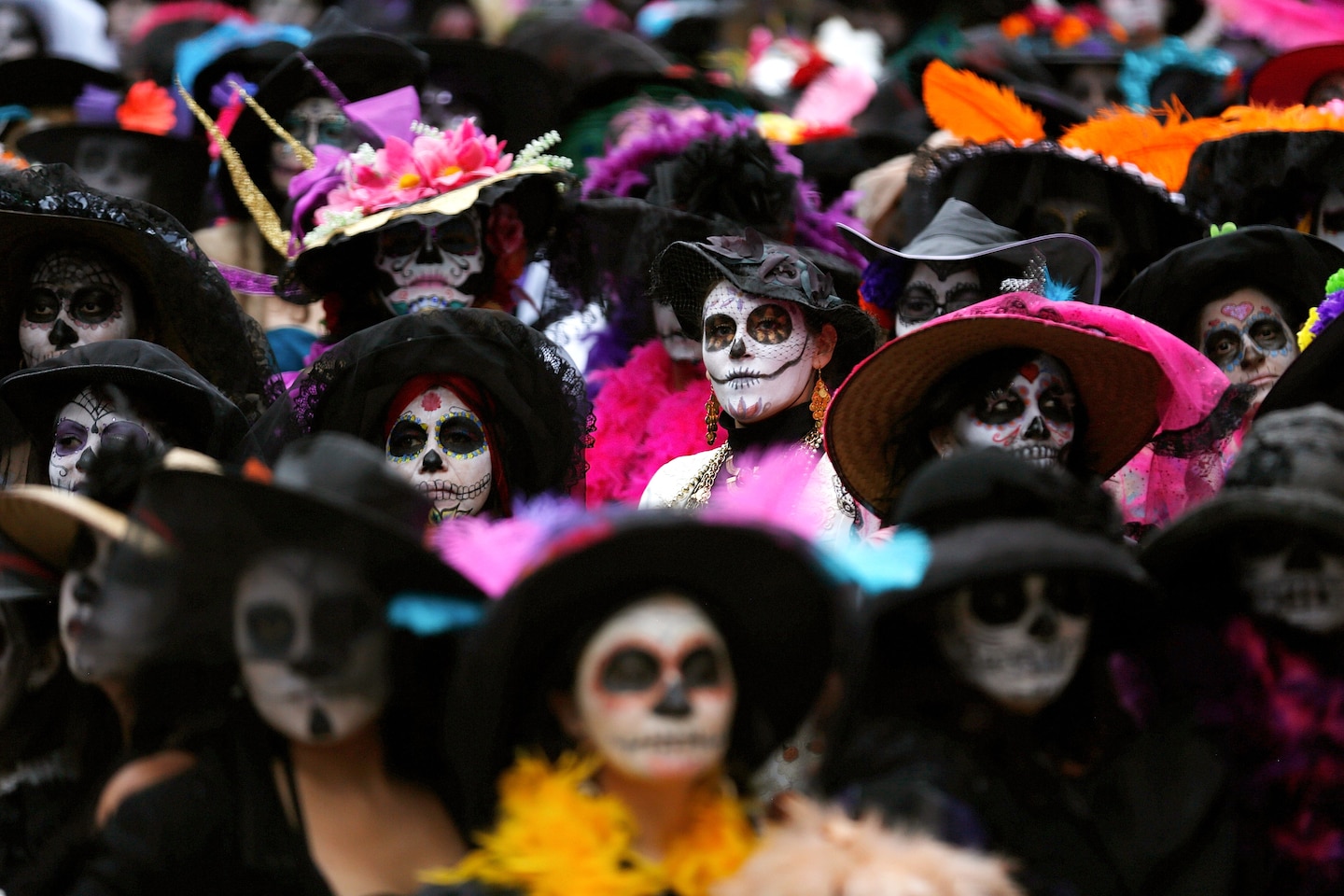
Celebrating Day of the Dead: Exploring Mexico’s Rich Traditions
The Day of the Dead, or Día de los Muertos, is a vibrant and colorful celebration in Mexico that honors and remembers loved ones who have passed away. It is a unique cultural event that combines indigenous Aztec rituals with Catholicism, resulting in a rich and fascinating tradition. From elaborate altars to intricate sugar skulls, the Day of the Dead is a time for families to come together and celebrate the lives of their ancestors.
History and Origins
The origins of the Day of the Dead can be traced back to the ancient indigenous cultures of Mexico, particularly the Aztecs. The Aztecs believed that death was just a natural part of the cycle of life and that the souls of the deceased could return to visit their loved ones during this time. They would honor their ancestors with offerings of food, flowers, and other items. When the Spanish colonized Mexico in the 16th century, they brought with them the Catholic faith and merged it with the existing indigenous beliefs, resulting in the unique blend of traditions that we see today.
The modern celebration of the Day of the Dead takes place over two days, November 1st and 2nd. November 1st is known as Día de los Inocentes, or Day of the Innocents, and is dedicated to honoring deceased children. November 2nd is the main day of celebration and is when families gather to remember and honor all of their departed loved ones.
Altars and Offerings
One of the most iconic elements of the Day of the Dead is the altar, or ofrenda, that families create in their homes or at the gravesites of their loved ones. These altars are carefully decorated with marigold flowers, candles, photographs of the deceased, and their favorite foods and drinks. It is believed that these offerings help guide the spirits of the departed back to the world of the living.
The altars also often include papel picado, which are colorful paper banners with intricate designs, as well as calacas and calaveras, which are decorative skeletons and skulls. These symbols represent the playful and lighthearted approach to death that is characteristic of the Day of the Dead.
Sugar Skulls and Catrinas
Another iconic element of the Day of the Dead is the sugar skull, or calavera de azúcar. These intricately decorated candies are made from sugar and are often personalized with the name of the deceased. They are not meant to be morbid, but rather a joyful and sweet way to remember those who have passed away.
The Catrina is another prominent symbol of the Day of the Dead. It is a skeleton dressed in elegant clothing, often depicted as a fashionable woman with a wide-brimmed hat. The Catrina represents the idea that death is a great equalizer, as it comes for everyone regardless of social status or wealth. It is a reminder to embrace life and not take it for granted.
Traditions and Celebrations
During the Day of the Dead, families gather at cemeteries to clean and decorate the graves of their loved ones. They bring flowers, food, and drink to share with the spirits and spend the day reminiscing and telling stories about those who have passed away. It is a joyful and festive occasion, with music, dancing, and laughter filling the air.
The celebrations also extend to the streets, where parades and processions take place. People dress up in traditional clothing and wear elaborate face paint to resemble skulls. The streets are adorned with colorful decorations, and traditional Mexican food and drinks are enjoyed by all.
Significance and Meaning
The Day of the Dead is not a somber or melancholy occasion, but rather a celebration of life and a way to remember and honor those who have come before us. It is a time to reflect on the cycle of life and death and to cherish the memories of our loved ones.
This vibrant and unique tradition has gained popularity around the world, with people from different cultures embracing and participating in the festivities. The Day of the Dead is a testament to the resilience and strength of Mexican culture and serves as a reminder of the importance of honoring our ancestors and celebrating the richness of life.
Exploring Regional Variations
While the Day of the Dead is celebrated throughout Mexico, different regions have their own unique customs and traditions that add to the richness and diversity of the overall celebration. Let’s take a closer look at some of these regional variations.
Oaxaca
Oaxaca, a state in southern Mexico, is known for its elaborate and vibrant celebrations of the Day of the Dead. The city of Oaxaca is particularly famous for its grand parades, where people dress up in traditional costumes and paint their faces to resemble skulls. The streets come alive with music, dancing, and the aroma of traditional Oaxacan cuisine.
One of the highlights of the Oaxacan celebrations is the creation of sand tapestries, known as tapetes. These intricate designs are made from colored sand and depict scenes from the Day of the Dead, such as skeletons engaged in various activities. The tapetes are displayed in the streets and serve as a visual representation of the festivities.
Michoacán
In the state of Michoacán, the Day of the Dead takes on a more solemn and spiritual tone. The indigenous Purépecha communities in Michoacán have preserved many of their ancient traditions and incorporate them into their Day of the Dead celebrations. One such tradition is the creation of elaborate altars in the shape of a cross, known as cruz de cempasúchil.
The cruz de cempasúchil is adorned with marigold flowers and other offerings, and it serves as a focal point for families to gather and pray for their departed loved ones. The altars are often set up in the homes of the deceased or in community spaces, and they are a reflection of the strong connection between the living and the dead in Purépecha culture.
Yucatán
In the Yucatán Peninsula, the Day of the Dead celebrations are influenced by the region’s Mayan heritage. One of the unique traditions in this area is the Hanal Pixán, which translates to “food for the souls” in the Mayan language. Hanal Pixán is a multi-day celebration that combines elements of the Day of the Dead with traditional Mayan rituals.
During Hanal Pixán, families prepare special dishes and offerings for their departed loved ones. These include traditional Mayan foods such as pib, a type of underground oven-cooked meat, and mucbilpollo, a tamale-like dish. The altars are decorated with marigolds, candles, and photographs of the deceased, creating a warm and inviting space for the spirits to return.
Conclusion
The Day of the Dead is a truly remarkable and captivating celebration that showcases the beauty and resilience of Mexican culture. From the colorful altars to the intricate sugar skulls, each element of the tradition holds deep meaning and significance. Whether it’s in Oaxaca, Michoacán, or the Yucatán Peninsula, the Day of the Dead is a time for families to come together, celebrate life, and honor the memories of their loved ones. It is a celebration that reminds us of the importance of cherishing our past while embracing the present.
Key Takeaways: Celebrating Day of the Dead – Exploring Mexico’s Rich Traditions
- Day of the Dead, or Dia de los Muertos, is a colorful and vibrant celebration in Mexico.
- It is a time to honor and remember loved ones who have passed away.
- Altars, or ofrendas, are created with photos, favorite foods, and mementos of the deceased.
- Marigolds, known as the flower of the dead, are used to decorate altars and gravesites.
- Traditional foods, such as pan de muerto and sugar skulls, are enjoyed during the festivities.
Frequently Asked Questions
What is the significance of the Day of the Dead in Mexico?
The Day of the Dead, or Día de los Muertos, is a significant cultural celebration in Mexico that honors and remembers deceased loved ones. It is believed that on this day, the spirits of the departed return to Earth to visit their families. The celebration is a way to remember and celebrate the lives of those who have passed away, and to show love and respect for them.
Mexican families prepare elaborate altars, or ofrendas, with photographs, favorite foods, and other personal items of the deceased. They also visit cemeteries to clean and decorate graves, and to spend time with the spirits of their loved ones. The Day of the Dead is a unique and beautiful tradition that showcases Mexico’s rich cultural heritage.
How is the Day of the Dead celebrated in Mexico?
The Day of the Dead is celebrated over the course of several days, beginning on October 31st and ending on November 2nd. The celebration involves a combination of religious and cultural practices. Families often gather in their homes or at cemeteries to create altars and decorate them with marigolds, candles, sugar skulls, and favorite foods and drinks of the deceased.
During this time, it is common to see people dressed in traditional costumes, such as colorful dresses and suits, and wearing skull face paint. Parades and processions also take place, with music, dancing, and singing. The atmosphere is vibrant and joyful, as families come together to celebrate and remember their loved ones.
What is the history of the Day of the Dead in Mexico?
The Day of the Dead has its roots in pre-Columbian indigenous cultures, such as the Aztecs and Mayans, who believed in the cyclical nature of life and death. When the Spanish colonizers arrived in Mexico, they brought with them Catholicism, which merged with the indigenous beliefs to create the modern celebration of the Day of the Dead.
Today, the Day of the Dead is recognized as an important cultural event in Mexico and is protected as an Intangible Cultural Heritage of Humanity by UNESCO. It is a time when families come together to honor their ancestors and to celebrate the rich traditions and heritage of Mexico.
What are some traditional foods associated with the Day of the Dead?
Traditional foods play a significant role in the Day of the Dead celebrations in Mexico. Pan de Muerto, or Bread of the Dead, is a sweet bread decorated with bone-shaped pieces of dough and sprinkled with sugar. It is often placed on altars as an offering to the spirits of the departed.
Another traditional food is calaveras de azúcar, or sugar skulls. These colorful and intricately decorated skulls are made from sugar and are often personalized with the names of deceased loved ones. They are both decorative and edible, and are a symbol of the celebration of life and death.
How does the Day of the Dead differ from Halloween?
While Halloween and the Day of the Dead both fall around the same time of year and involve the theme of death, they are two distinct celebrations with different cultural origins and traditions. Halloween is primarily a commercial holiday that originated in Celtic cultures and has been popularized in North America.
The Day of the Dead, on the other hand, is deeply rooted in Mexican culture and has a strong spiritual and familial significance. It is a time for families to come together and honor their ancestors, rather than focusing on costumes and trick-or-treating. The Day of the Dead is a unique and meaningful celebration that showcases Mexico’s rich traditions and customs.
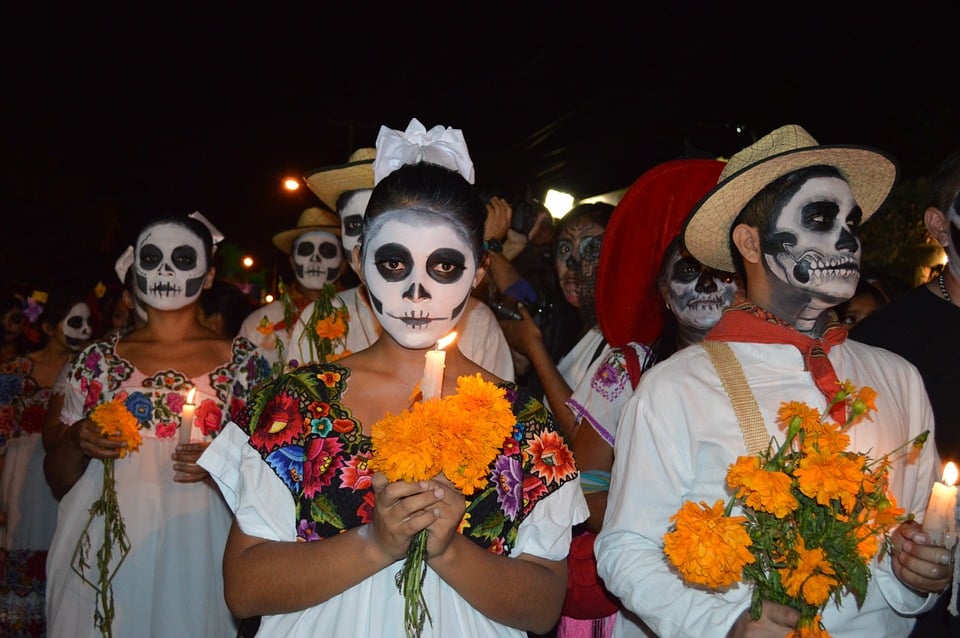
Day of the Dead is a two day celebration rich in culture
Final Thoughts: Celebrating Day of the Dead and Immersing in Mexico’s Rich Traditions
As we conclude our exploration of Mexico’s vibrant and enchanting Day of the Dead traditions, it’s evident that this celebration holds a special place in the hearts of the Mexican people. Through the use of colorful altars, marigolds, sugar skulls, and heartfelt remembrances, they honor their loved ones who have passed away and embrace the cycle of life and death with grace and joy.
The Day of the Dead is not just a time of mourning, but a celebration of life itself. It reminds us to cherish our memories, connect with our ancestors, and appreciate the beauty of our own mortality. The rich cultural heritage and deep-rooted traditions of this holiday provide a unique glimpse into the soul of Mexico, and it’s an experience that should not be missed.
So, whether you find yourself wandering through the bustling streets of Mexico City or exploring the tranquil villages of Oaxaca, immerse yourself in the vibrant festivities of the Day of the Dead. Witness the breathtaking displays of art and creativity, savor the delicious traditional foods, and join in the lively music and dancing. And most importantly, take a moment to reflect on the significance of this ancient tradition and the profound wisdom it imparts.
In conclusion, the Day of the Dead is not just a holiday; it’s a beautiful tapestry woven with love, remembrance, and a celebration of life

